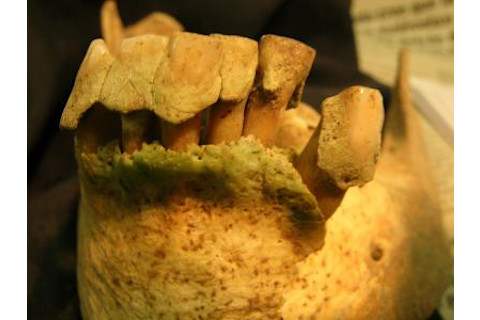
What big plaque deposits you have!
A dentist will tell you to floss everyday, but an archeologist might, well, have different priorities. Turns out the nitrogen and carbon isotopes in dental plaque can give archeologists a look at 1,000-year-old diets. The buildup of plaque on this set of teeth is, um, impressive. (Cut the skull some slack though, this was before we had dentists to chide us about daily flossing.) Without the benefit of modern dental hygiene, the plaque built up over a lifetime, layer upon layer like a stalagmite. In a paper
recently published in the Journal of Archeological Science researchers exhumed 58 medieval Spanish skeletons and scraped off their dental plaque to test carbon and nitrogen isotopes. When they compared the isotope profiles of the Spaniards to that of plaque from an Alaskan Inuit, the scientists found the ratio of nitrogen-15 to be quite different. That makes sense, as the Intuit ate a predominantly marine diet, and there is more nitrogen-15 in the protein molecules of organisms living in sea than on land. Another benefit of plaque is that it's easier to test than bone, which has to be dissolved in acid to extract from the mineral matrix the collagen that is then analyzed. Also, they argue, dental plaque is not technically part of the body, so destroying plaque from an ancient skeleton is preferable destroying bone. Poor plaque---useful but unloved.
Image courtesy of University of Nevada













